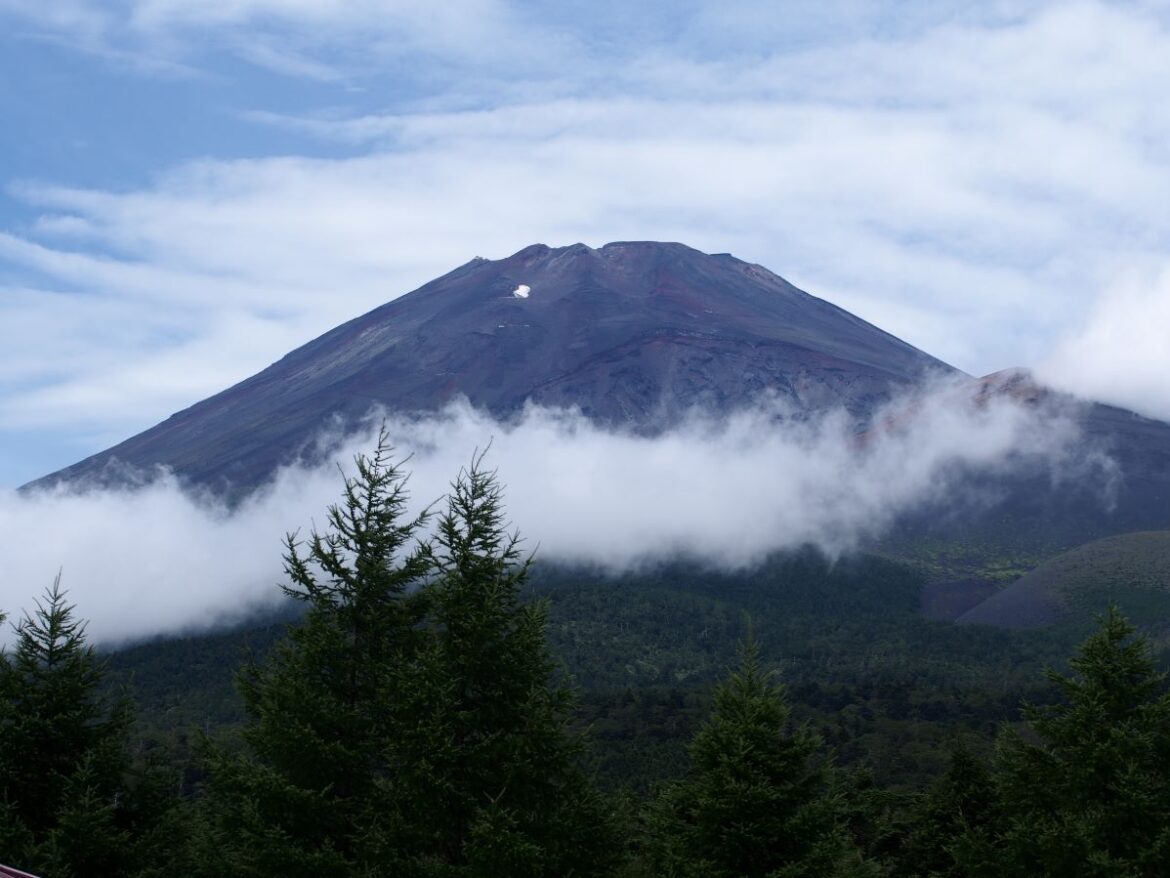Nestled between the towering Mount Fuji and the serene Pacific Ocean, Shizuoka is a hidden gem offering a perfect blend of natural beauty, rich history, and thrilling adventures. Our journey to Shizuoka was an exciting escape from the bustling cities of Japan, revealing a side of the country that feels off the beaten path yet brimming with unique experiences. Although very few foreign tourists venture to this prefecture to access Fuji, those living in Tokyo often head to Shizuoka for a week or a weekend to escape the city. We hopped on the bullet train and headed out to find out why…
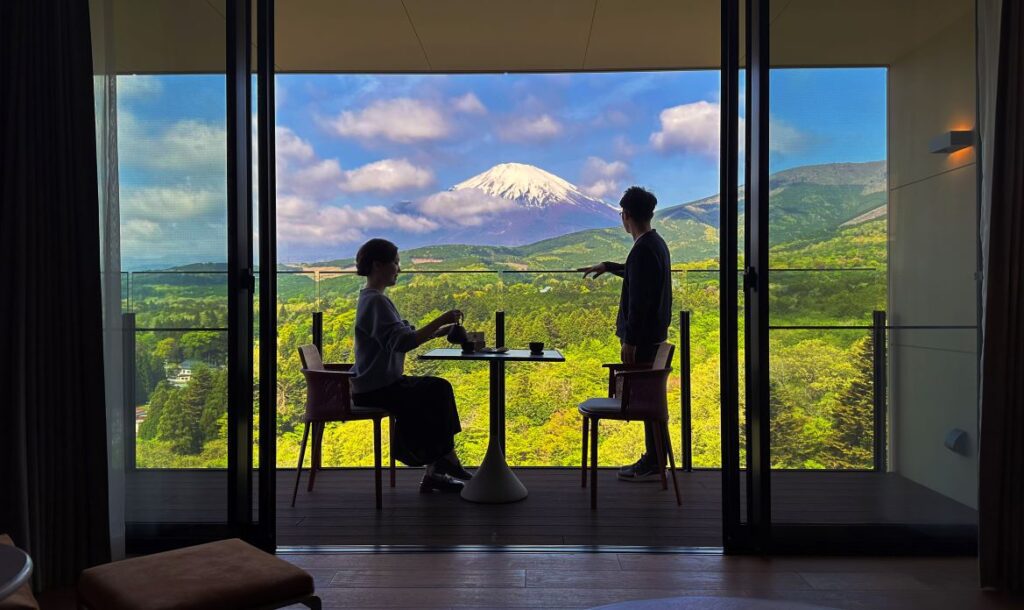
How can I get to Shizuoka?
Travelling from Tokyo on the Tokaido Shinkansen, we were there in about an hour, while from Kyoto or Osaka, it’s a two to three-hour ride, making Shizuoka an ideal destination for a quick getaway or a more extended exploration. The bullet train in Shizuoka allows you to explore along an ancient trade route that the track now mostly follows.
Make sure you get tickets in advance and look into the luggage storage options if you are unable to travel light – you may have to book particular, limited, seat types. Once you are in the prefecture, there are buses and local trains to get around, but it might be worth hiring a car to make sure you can easily transport everything you need if you are going to climb Fuji, camp, hang glide or enjoy any of Shizuoka other adventurous, kit-heavy options.
How can I see Mount Fuji?
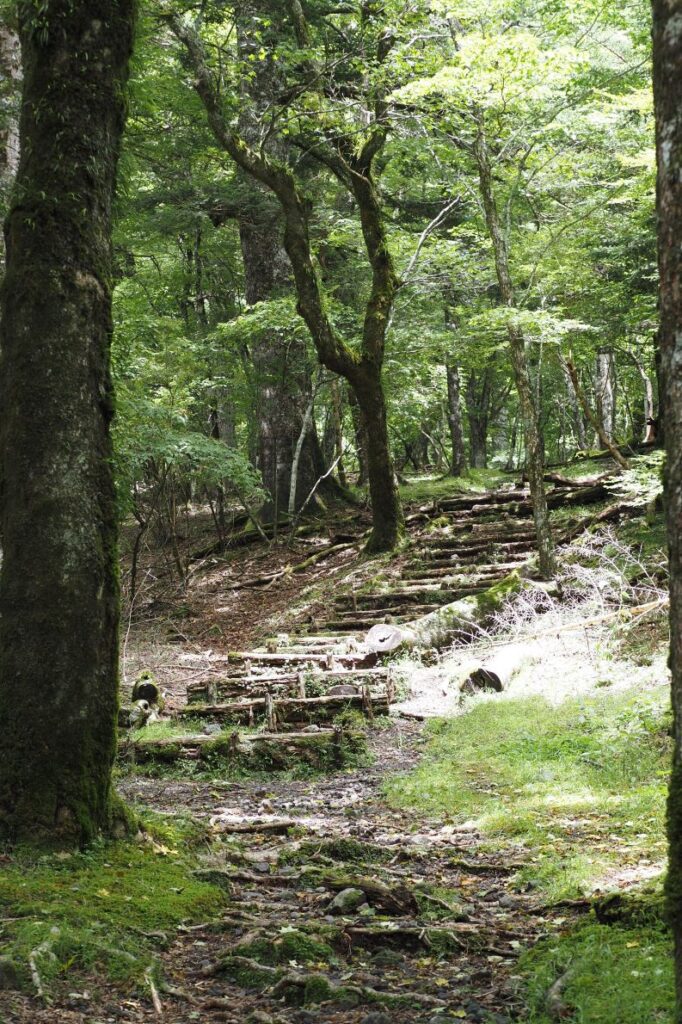
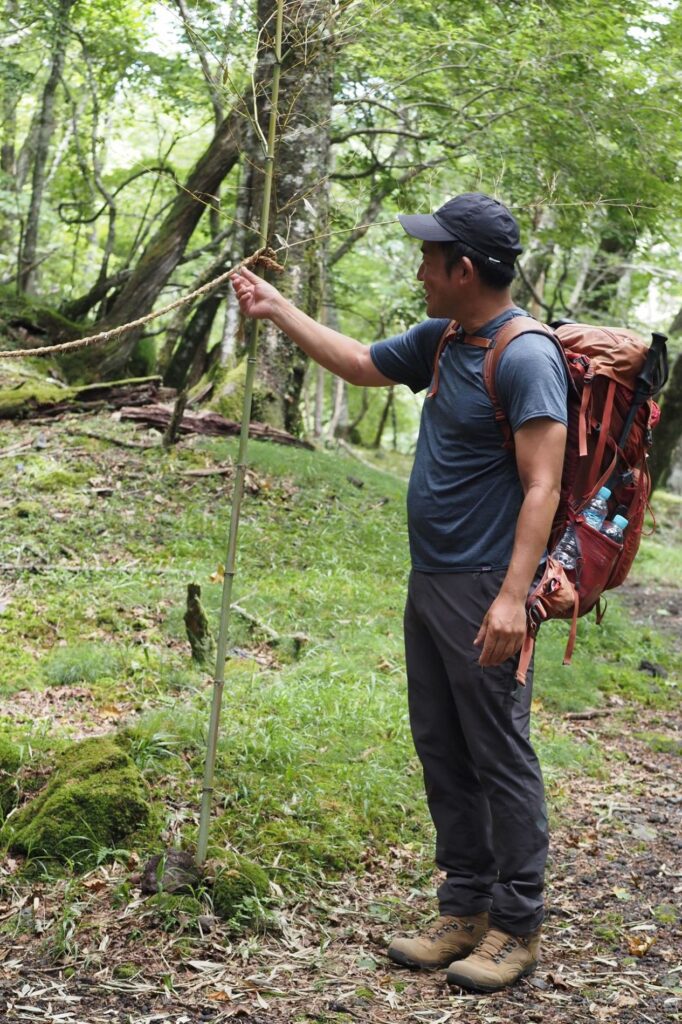
We took a fantastic trip with FUJI SUNRISE, run by Masaki Iwami, a knowledgeable guide who has many years of experience, having first climbed Fuji himself at age eight! He’s also incredibly passionate about the mountain, which holds spiritual importance for many Japanese people, and the sustainability of tourism around Fuji. On top of all this, he’s a really lovely guy!
The trek was called an East Fuji nature hike, which involved climbing to the top of one of Fuji’s parasite volcanos (a smaller cone close to the main volcano caused by fractures in the slopes of the bigger volcano). The one we climbed is called Futatsuzuka Shitazuka, at a height of 1804m, which takes about 2.5 hours to climb and 1.5 hours to descend along a route that was in popular use 300 years ago.
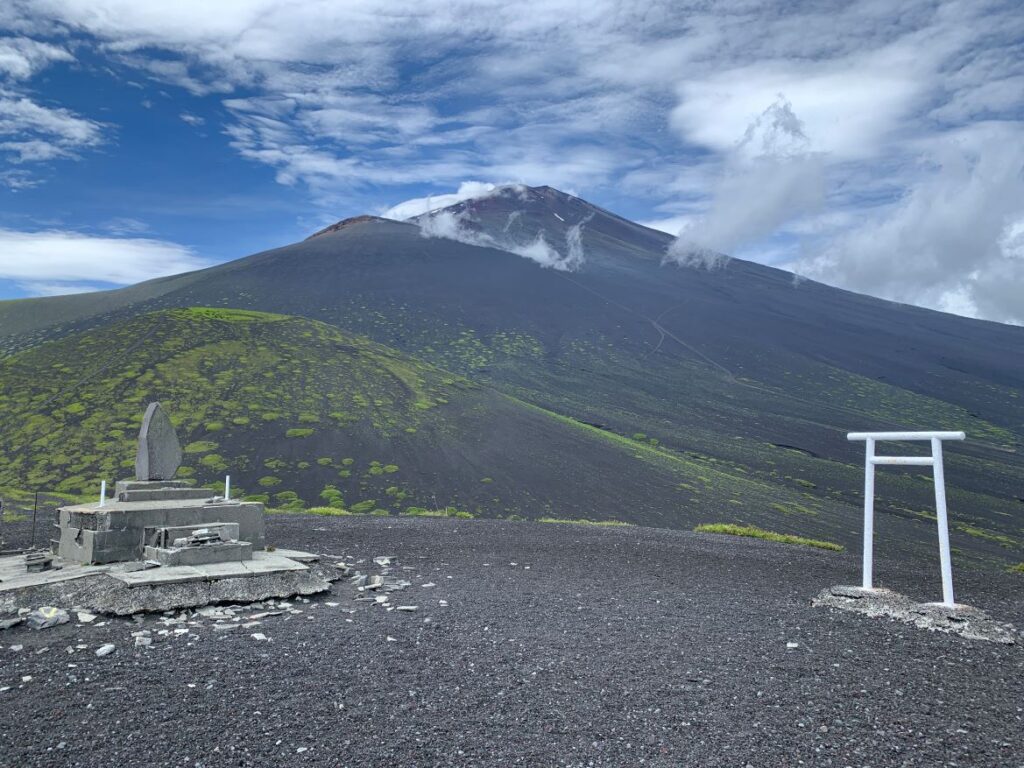
Standing on top of Futatsuzuka, looking up at Fuji looming ahead, and then looking back at the carpet of clouds just below us was completely unforgettable. The trail, called Suyama, passes by woodland shrines, lava flows and beyond the treeline to the the rugged volcanic gravel and scrubs on the higher slopes of Fuji. At the peak, we stopped to enjoy the crisp air and the priceless views, take a million photos and then gobble some cup noodles for an impromptu lunch before heading back. We were lucky enough to see deer, kites and lots of intriguing flora about which Masaki was able to answer any questions.
This is a pretty low-effort climb if you’re a regular enthusiast, but a bit of a challenge if you haven’t left your sofa since Covid. FUJI SUNRISE offers a range of experiences and options, so have a look at their website to find out what would suit you.
Where should I stay?
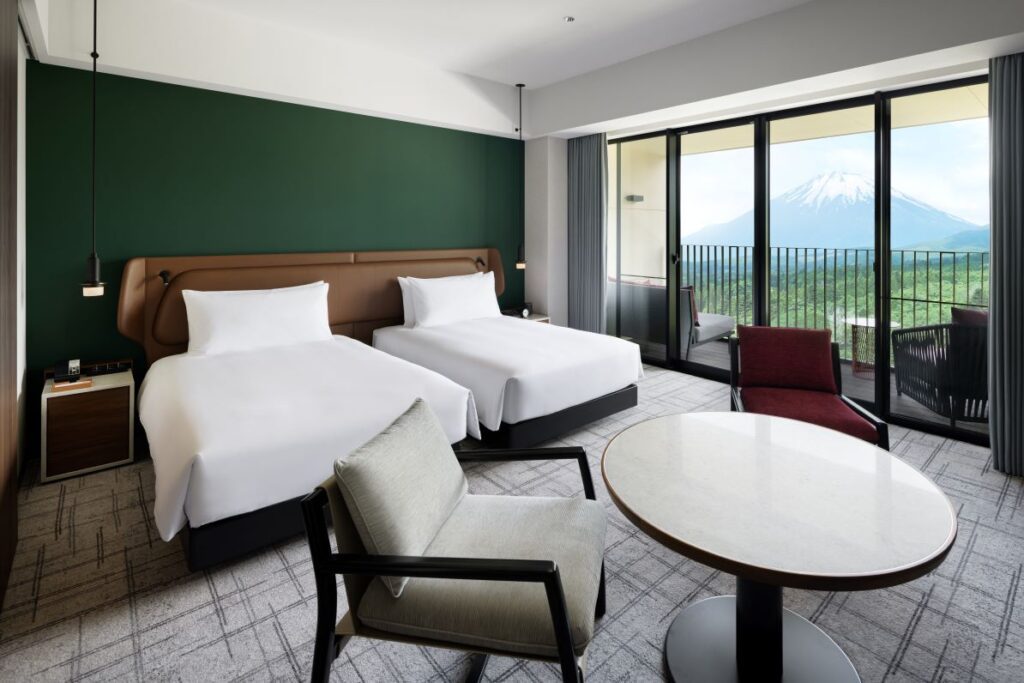
There are plenty of places to choose from, but our top pick for something a little different is the Hyatt Fuji Speedway Hotel. The hotel is hidden amongst the green, rolling foothills of Fuji and is sandwiched between the Fuji Speedway racetrack and an incredible panoramic view of the mountain itself. As you enter the building, which opened just a couple of years ago, you are immediately welcomed by an impressive display of racing cars from all periods of motor racing history, parts of cars and decor inspired by cars.
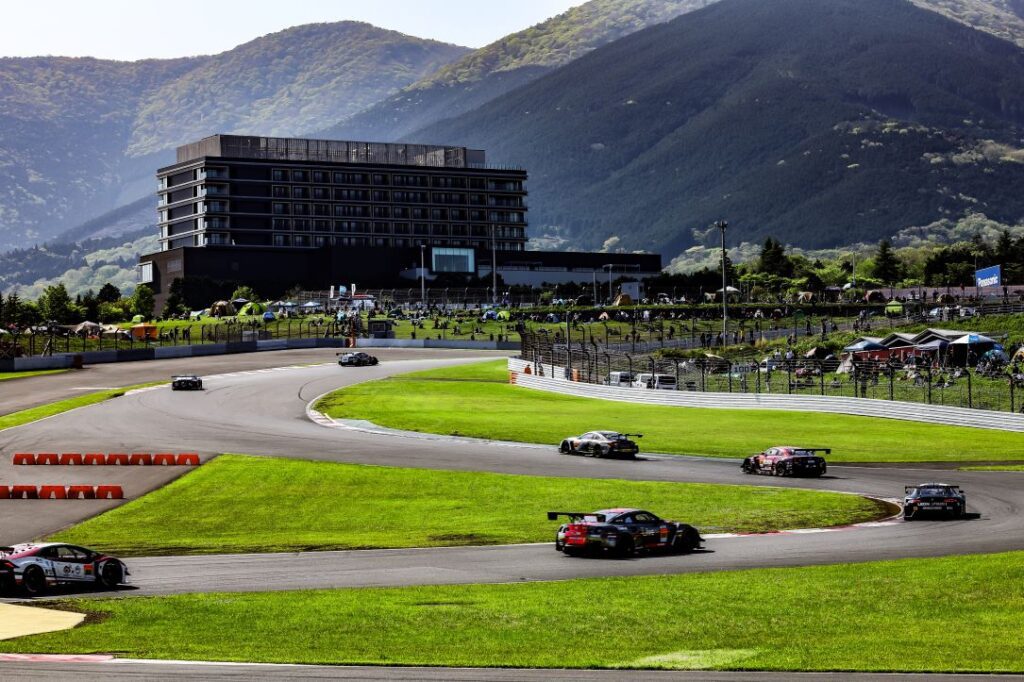
The lower two floors of the hotel, designed with an austere colour palette that speaks of gravel and plumes of smoke while having a literally gleaming full-height escalator to the third-floor reception area, holds the motorsport museum. Featuring classic cars, rally cars, F1 cars and much more, it’s the petrolheads dream and, when you’ve seen enough of the stationery ones, you can head to the rooftop bar to see who’s making laps of the circuit at that exact moment!
If cars are not your thing, there are shared indoor and outdoor onsen baths available, perfect for slipping off your sweaty gear from climbing Fuji, giving yourself a good shower til you’re sparkling clean, then sliding in and letting the hot water ease those aching muscles. The outdoor onsen has the benefit of the crisp air but sadly, for modesty’s sake, a frosted glass screen between you and the mountain.
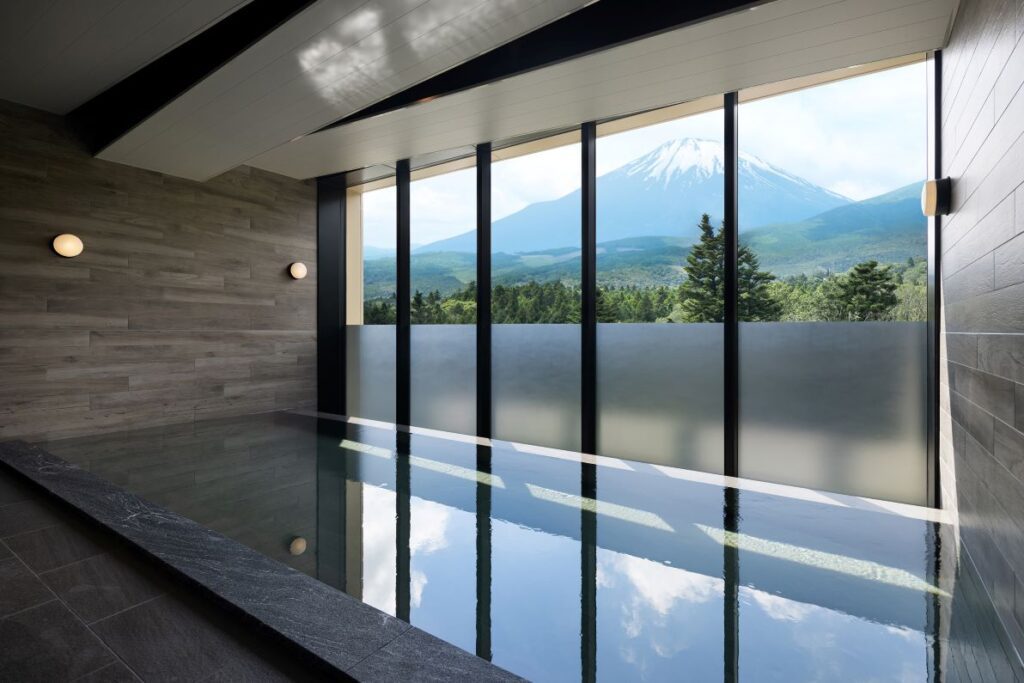
Also, if you can tear your eyes from the track, the view of Fuji from almost all the windows on the opposite side is absolutely to die for (if you’re lucky enough to avoid the cloudy days!). We dined in the Italian restaurant TROFEO, where there’s a good set menu and an extensive a la carte; our favourites were the Colourful Summer Vegetable Salad and the main courses, roast beef with red onion marmalade and pan-fried fish with vegetable salsa and cod roe.
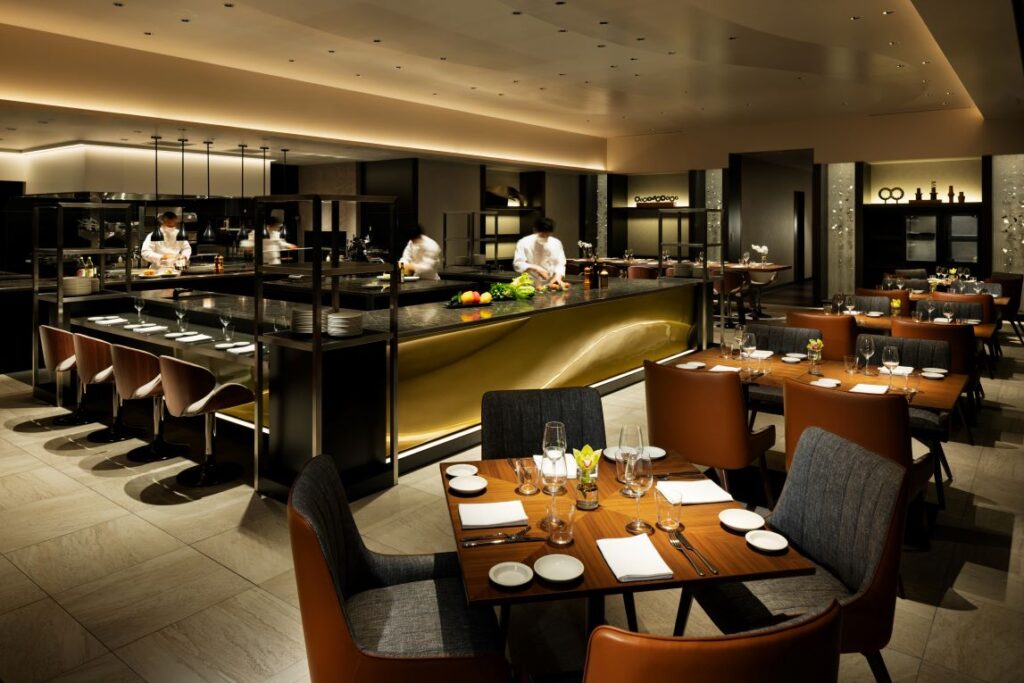
Bar 4563, with little cast iron model cars adorning all the walls, is a wonderful design feature, but pretty quiet if the race isn’t in town. They do make excellent craft cocktails and have a sizable range of Japanese whiskeys, so don’t miss it out, but you might need to take a friend rather than hope to meet one!
If you fancy something more traditional, we also stayed at Mt. Fuji Satoyama Vacation & Ecotours in a guesthouse based on the famous Edo period ukiyo-e artist Hokusai.
What else can I do?
There are several National Parks in the prefecture, offering plenty of opportunities for hiking, cycling and adventure sports, but it’s just as easy to spend a day shopping or taking a day out to play a round of golf before tucking into the region’s exceptional cuisine. Shizuoka is known for growing tea in several forms and wasabi, so make sure you try both when you pass through, although the location of Shizuoka between the mountains and the sea means you can also get the best eel, seafood, fruit and sake.
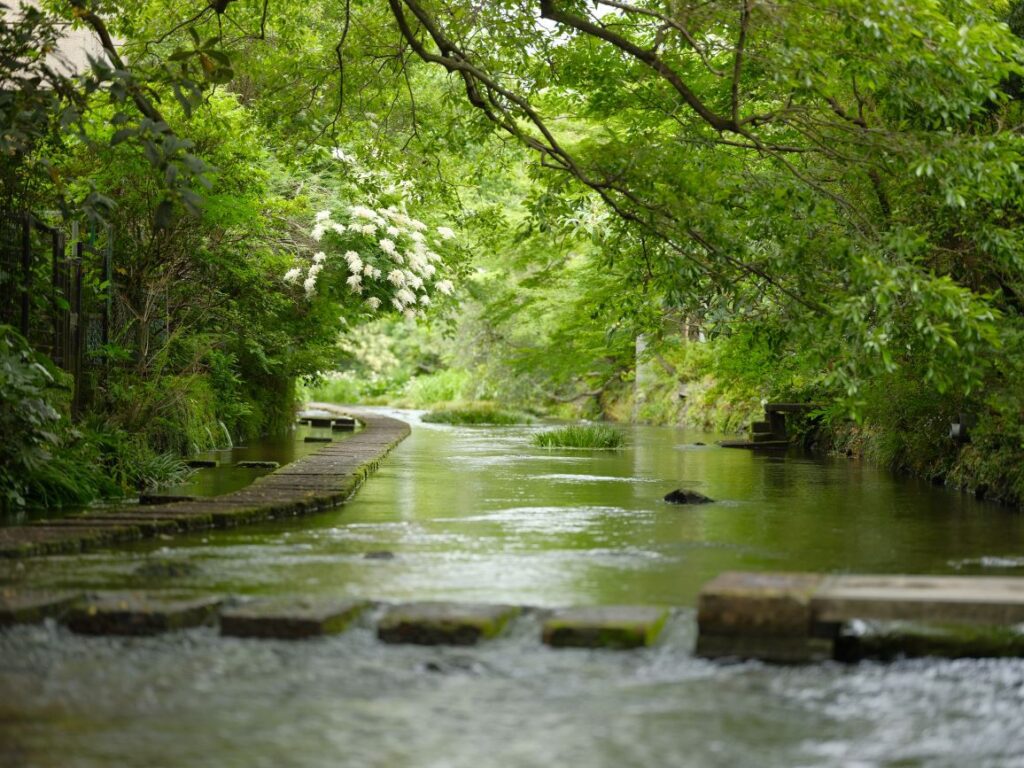
Our actual point of arrival in Shizuoka was the Shinkansen station at Mishima, where we were almost immediately up to our knees in a stream of cool water filtered through the Fuji soil over 50 years! The Genbe River is symbolic of the area’s commitment to sustainable and eco-friendly practices, especially in tourism. Due to the industrial nature of Mishima during the 20th century, the Genbe river was nearly build over, but a community endeavour to clean the river restored it to its natural beauty and it is collectively cared for by residents, local authorities and private groups even now.
Another feature in Mishima is the Taisha shrine, considered the highest-ranking shrine in the region, where one of the most famous shogun, Minamoto no Yoritomo, worshipped.
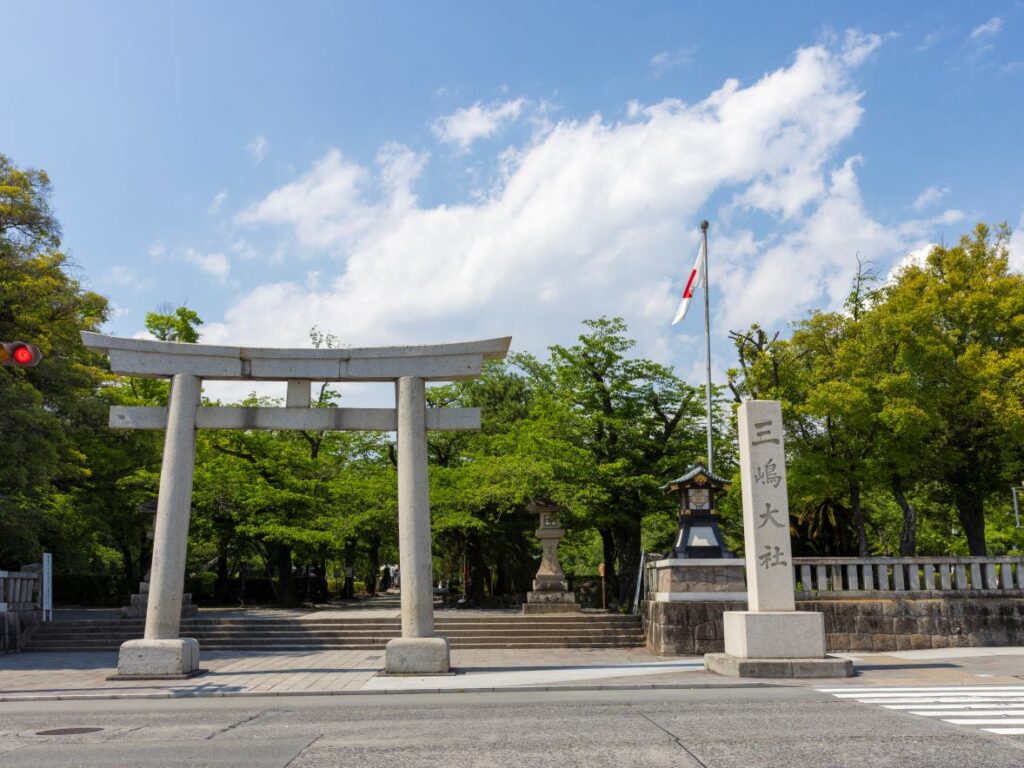
Our guide on this walk, Tony Everitt, is originally from New Zealand but has been in Japan on and off for thirty years and his wealth of knowledge about Japanese history and culture means he’s a fascinating guide. He runs tours through his company Hike Hakone Hachiri, through which he introduces tourists, both foreign and Japanese, to the cultural and natural heritage of the area, utilising his experience as a former forester to tell us about nature in Shizuoka, as well as his enthusiasm for the historic Tokaido route and its importance for the area.
If you don’t fancy a guided tour, there are lots of suggested activities and information on the tourist board website at Explore Shizuoka. With quaint villages, beaches, nature, hot springs and Mount Fuji itself, make sure a visit to Shizuoka, the prefecture that has it all, is on your Japan itinerary.

